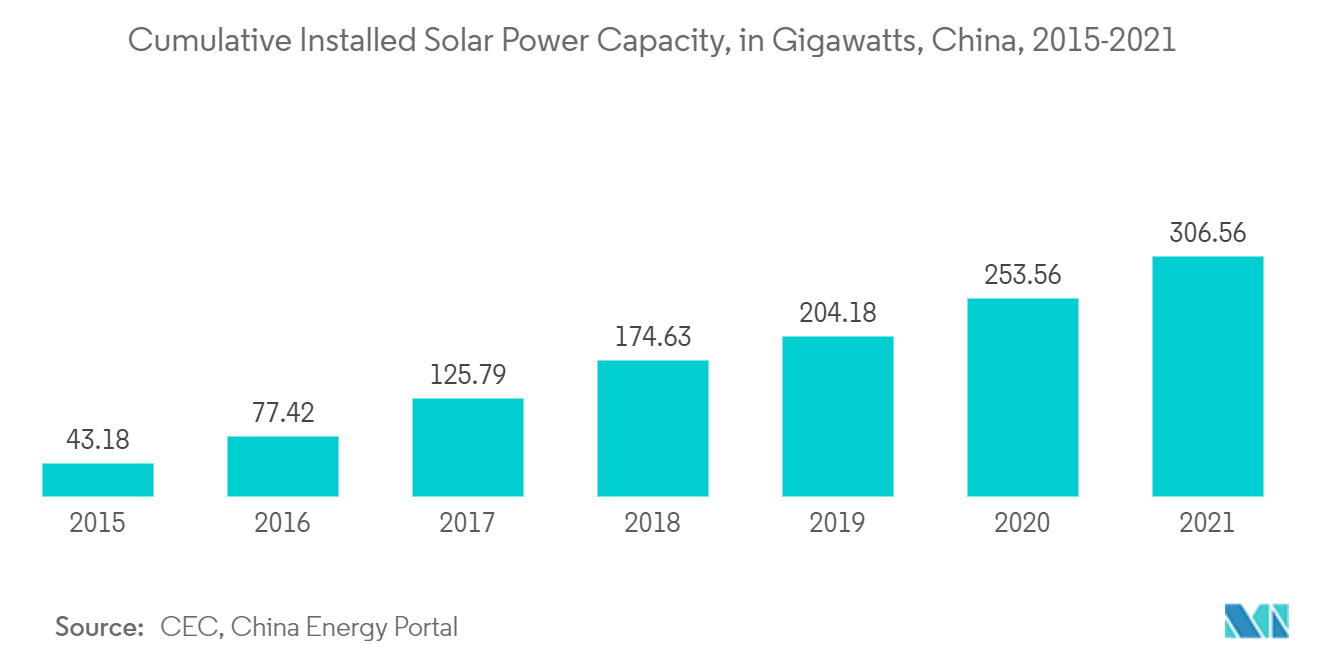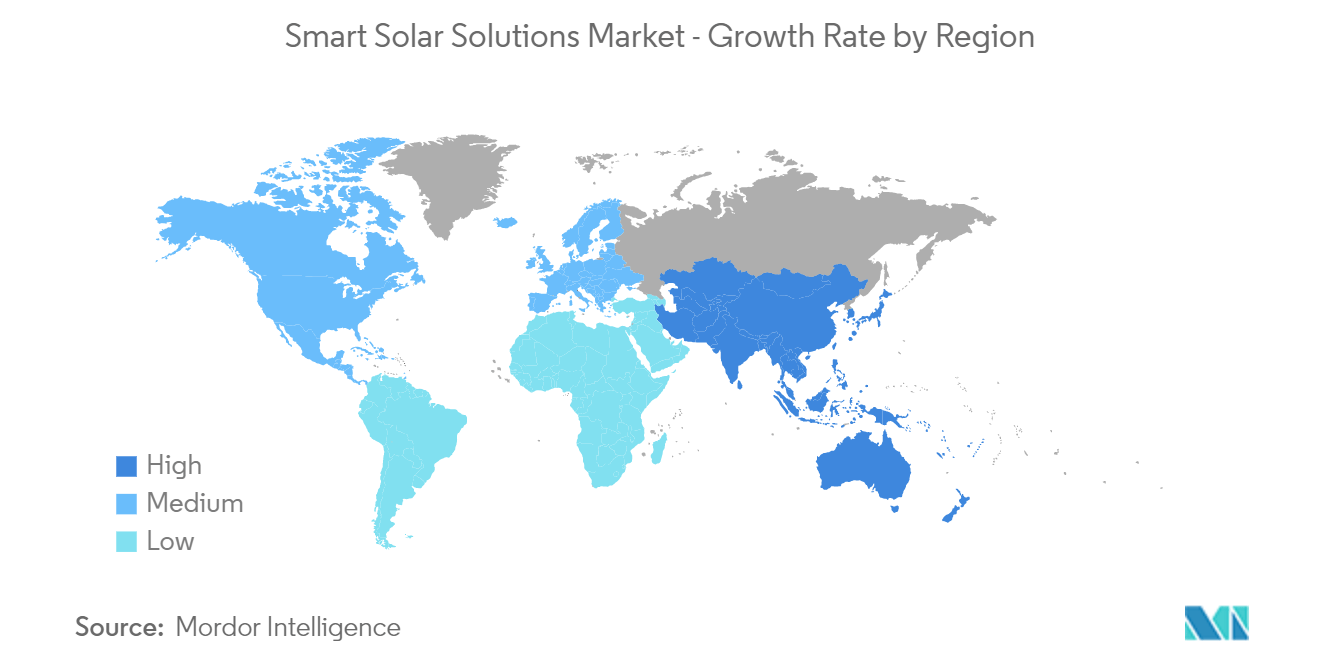Market Trends of Smart Solar Solutions Industry
Government Subsidies on Solar Power to Drive the Market Growth
- The ever-growing energy demand from residential, commercial, and industrial end users and depleting natural resources have resulted in the need to control energy consumption and switch to more efficient and cleaner energy generation sources. Governments worldwide are introducing favorable policies and subsidies for deploying renewable power sources such as solar and wind power.
- Governments around the world are looking for cost-effective solutions. They are encouraging the public by giving subsidies and shifting to green solutions, pushing the adoption of smart solar solutions. For instance, several policy measures were set in place by the Ministry of New and Renewable Energy (MNRE) to support achieving India's 2022 solar goals.
- An amendment was made to the National Tariff Policy (NTP) to include provisions for renewable generation obligations (RGOs) and renewable purchase obligations (RPOs). The policy requires state-owned power distribution companies to purchase 8% of their energy from solar by 2022. It mandates thermal power plant operators to have a certain amount of renewable components in any newly installed capacity.
- The Chinese solar power industry has been the fastest-growing market for the past few years. China has taken giant strides in solar technology and manufacturing due to several policy changes and incentives. Even though it continues to use conventional energy as a major source in its energy mix, the country's role as a major producer of renewable energy cannot be underestimated. Further, under its climate pledge, the country aims to have 1,200 GW of solar power and wind capacity by 2030. Such developments further spur the market's growth.
- For instance, according to the data from China Electronics Corporation (CEC) and China Energy Portal (CEP), China's cumulative installed solar power capacity increased from 43.18 GW in 2015 to 306.56 GW in 2021. Moreover, according to the National Energy Administration (NEA) data, China installed 87.4 GW of solar in 2022.

Asia-Pacific to Witness a Significant Growth Rate Over the Forecast Period
- Smart solar solutions are gaining momentum extensively in Asia-Pacific. Many nations in this region consider smart solar solutions as a middle-out innovation growth. In addition, various government initiatives coupled with subsidies on solar power are analyzed to influence the market growth in the coming years.
- With the focus of the energy industry shifting toward renewable energy sources, the solar industry is witnessing increased demand from this region, as favorable policies like the feed-in tariff (FIT) scheme in Japan have shown in the recent past. Growing grid automation and demand response investments in Japan, India, and South Korea are helping this industry progress.
- Further, countries like China and India are significantly speeding up renewable installations such as solar and wind power to reach climate targets. Such developments are expected to boost these countries' demand for smart solar solutions. For instance, according to the data from China's National Energy Administration (NEA), installed solar capacity in China reached 360 GW at the end of October 2022, a 29% increase year-on-year. China's cumulative additions for the first ten months of 2022 were 58.2 GW, deploying more than 5.6 GW solar in October.
- Moreover, market vendors in the region are developing innovative solutions to upgrade the legacy solar system into smart solar systems, thus positively influencing the market's growth in the Asia-Pacific region. For instance, in June 2022, Servotech Power Systems developed a solar performance monitoring and controlling device called ComPort. The device will identify defects, issue notifications, diagnose issues and suggest operation and maintenance tasks. Further, the device can be integrated into any domestic hybrid/off-grid solar system and turn it into a smart solar system.


